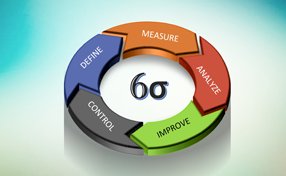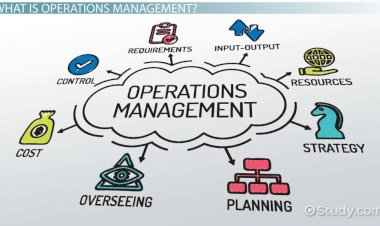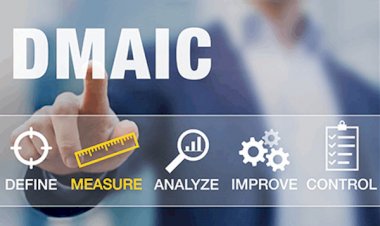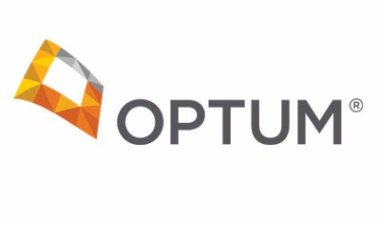Six Sigma Phases Overview (DMAIC)
Six Sigma Phases Overview (DMAIC)

Six Sigma Phases Overview (DMAIC)
DMAIC
Six Sigma Phases Overview (DMAIC)
Define Phase Overview
In the define phase of six sigma project we intend to create a sales pitch for seeking approval from the sponsor, and anticipate and answer questions in the sponsor’s mind. Additionally we set up the Change Management Framework for the initiative. However we must be careful NOT to document the cause or potential solution.
Treat the Define Phase as a Sales Pitch that you are trying to create to get the sponsor to approve the initiative. For the approval he/she will need to understand why is the project is necessary, why is it a priority, how does it tie up with the organizational Y etc.
And to ensure success of this initiative Define is the right time to set up the change management framework by choosing the right team to participate in the initiative, giving a ball park idea of the roles and responsibilities for each individual, setting up of project boundaries, communication plan etc.
Define is about creation of a charter (inclusive of business case, problem statement, goal statement, communication plan and roles and responsibilities, project timeline and milestones etc). Additionally we create a COPIS or SIPOC which is a high level flow of the process, along with the detailed process map.
Measure Phase Overview
The measure phase of six sigma is where we commence to collect the data around our six sigma project. The measure phase starts with identifying the CTQ characteristic which the project intends to improve and subsequently we work and set up a data collection plan. Setup of data collection strategy/plan is done to essentially ensure that all project team members are on common ground about the Y metric of the project.
Data Collection Plan intends to provide clarity around the metrics to be measured, the performance standards for the project Y (as per the goal statement of Project), defining the Upper specification Limit and the Lower Specification Limit for the Y metric and clearly articulating the defect definition for the project Y metric. Also we must articulate how we intend to capture the Y metric data and document the formula to be used, equipment to be used, database or container where the Y metric is to be stored for project use, the information on the data items that we shall need (as per our formula). In certain cases u may even need to document a training plan for data collection team.
The next step in the measure phase is the measurement system analysis. In this exercise we set up MSA experiments to understand the validity of the measurement system. This is typically done with MSA tools in the commonly used Minitab software. For Continuous Y we deploy the Gage R&R Anova method to validate our equipment and the operator, for simply verifying our equipment we use test retest method. While in case when data is discrete we deploy the attribute agreement analysis or effectiveness efficiency method etc. Based on certain values we decide if the MSA validates the correctness of data or not.
Should the data be found to be appropriate for further use, we calculate the as-is process capability for our Y Metric in form of Z or dpmo or Cp CPk etc. (this is a debatable area as several firms do calculation of Process Capability as part of Analyze phase.)
Analyze Phase Overview
The analyze phase of six sigma commences with identification of the potential Xs that could impact the Project Y Metric. One conducts brainstorming sessions, or looks at mathematical derivatives that contribute to project Y, or explore to identify the inputs to your process to understand the contributing Xs. Additionally one may also explore the possibility of the available strata in the project data to identify possible Xs.
Once the potentials Xs are identified, a similar data collection plan is drawn to collect data around our Xs. Arguable; MSA may be conducted on the data collected.
Post the identification of the Xs, one commences to validate the statistically significant impact of X on Y. During or may be prior to the Hypothesis tests one would also need to explore various other data attribute of Normality and stability etc. Concurrent to the hypothesis one deploys various data visualization tools like Box Plot, Scatter Plot, and Graphical Summary etc.
Improve Phase Overview
Improve phase of six sigma project starts with identification of potential solution and then proceeds with screening solution, testing solution, refining solution, piloting solution and justifying solution. These all activities lead to development of robust action plan around the critical X’s. Improve phase includes development and implementation of new process/ future state process.
Various frameworks are used to generate list of robust actionable solution, one of the commonly used framework to develop list of robust actionable solution is QFD (Quality Function Deployment). Various techniques such as brainstorming, benchmarking etc are suggested while generating solutions in improve phase. The solution generated then goes through screening where all the potential solutions are screened on various parameters such as cost, time, complexity etc. Once solutions are screened, then if required, they are tested and refined. Improve phase will be the main phase where new ideas will be implemented/tested to get better performance around your “Y”. This phase needs through attention as entire process will be going through transition. Usages of change management techniques are heavily emphasized to manage human aspect of change. One of the best practice in improve phase is to run pilot before going for full fledge implementation as this gives confidence on quality of technical solutions generated/ tested/ refined at the same time this increases acceptability of change among stakeholders.
During pilot testing of solution, Data collection plan should be prepared and data should be collected at planned interval. Upon successful completion of pilot we may implement the same solutions to entire process. Project team will keep collecting data around the defined metric. Once the improvement is validated statistically, we then, move to control phase.
Control Phase Overview
Control phase of six sigma is more like “Keep the Gains” phase.
We have been successful in improving our Project Y metric to a pre decided level (our goal statement) and the same has been done post our work on Xs. This part of the six sigma project will concentrate on keeping the Xs to their improved state such that the Y is still doing as desired.
Here we intend to setup a robust control mechanism for the Y & Xs. The common methods deployed here could be ensuring the new changes are embedded as part of process itself. ISO 9001 documentation updating is a great first step towards this.
This part of the six sigma projects will concentrate on keeping the X’s to their improved state such that the Y is still doing as desired. In control phase we intend to develop robust control plan around critical X’s and Y. Introduction of dashboards, visual signals, poka-yoke, audit program etc are recommended to ensure stringent control around the X’s so that the improved performance can be inherited by the process manager in future.

 Pankaj Kumar
Pankaj Kumar 






























Comments (0)
Facebook Comments